Pentax K-7 Review
Pentax K-7 Introduction
With the K-7, Pentax has the most feature-rich DSLR currently available - again. This DSLR camera boasts built-in stabilization, automatic horizon correction, a digital level, class-leading weather-sealing, a large 100% coverage viewfinder, a 3" LCD with 921K pixels, ISO up to 6400, 5.2 FPS continuous shooting, live-view and a wealth of unique photographic controls and image parameters. All this in a sturdy and relatively compact pro body. In addition to its photographic capabilities, the Pentax K-7 records HD movies and larger 1536x1024 3:2 aspect-ratio ones as well, either with a builtin mono mic or an external stereo one.
Note that as the Pentax K-7 shares numerous features with the K20D, some portions of this review were taken from the Pentax K20D full-review. However, the are enough additional features and ergonomic changes that one cannot simply skip to the conclusion page to understand the differences between these cameras.
This review takes a close look at the Pentax K-7 in terms of features, ergonomics, usability, performance, image quality and unique photographic controls. As their new flagship DSLR, the K-7 sports the following features:
- 14.6 Megapixels image sensor, 1.5X crop-factor.
- Automatic and selectable ISO from 100 to 6400.
- 1/8000s to 30s shutter-speeds, plus bulb mode.
- Exposure compensation, -5..+5 EV, 1/2 EV increments or 1/3 EV increments.
- Automatic, preset, kelvin and custom white-balance, all fine-tunable.
- 11-point auto-focus system, with 9 cross-type points.
- Focus-point selection: automatic, manual or center.
- Focus modes: single-shot, continuous and manual.
- Metering modes: multi-segment, center-weighed and spot.
- Full manual controls, including PASM modes.
- Exposure bracketing, 3 or 5 images, 0.3 to 2 EV increments. Optionally delayed or remote-triggered.
- White-balance, saturation, hue, high/low-key, contrast and sharpness bracketing, 3 images.
- Customizable image parameters: saturation, hue, tone-curve, overall contrast, highlight contrast, shadow contrast and sharpness.
- 5.2 FPS continuous shooting for up to 40 images.
- Self-timers: 12s and 2s with automatic mirror-lock-up.
- Remote trigger: Instant, 3s delay or continuous.
- Mirror-Up: Manual or remote-triggered.
- Auto-Exposure-Lock (AEL), Auto-Focus-Lock (AFL) and auto-focus(AF) override.
- 100% coverage 0.92X magnification viewfinder.
- 3” LCD 921K Pixels, 160 degree viewing-angle.
- Image review with magnification and histograms, luminance and RGB.
- Depth-of-field preview.
- JPEG, RAW and JPEG+RAW modes.
- Built-in popup flash, hot-shoe and sync-port for external lighting.
- 1536x1024 @ 30 FPS 3:2 aspect-ratio and 720p HD 16:9 aspect-ratio movie-mode. Recordable with or without sound, using built-in mono mic or external stereo mic.
- Live-view.
- Lithium-ion battery.
- Secure Digital High Capacity memory.
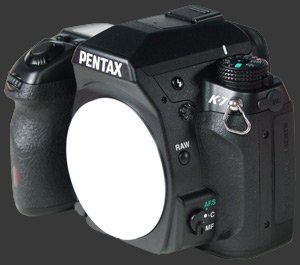
The Pentax K-7 also stands-out by having all the following advanced features, a few of them being unique to the K-7:
- Shake-reduction, provides stabilization to all lenses at no additional cost.
- Digital level with automatic horizon correction, corrects for camera tilt up to 1 degree towards each side.
- Dust-reduction, diminishes the necessity of cleaning the image sensor.
- Weather-seals, enables photography in adverse weather. Usable in rain and snow. Cold-resistant to -10C (14F).
- Auto-ISO with selectable minimum and maximum.
- Unique hyper-program, sensitivity-priority, hyper-manual and shutter-aperture-priority modes
- Direct ISO control in sensitivity-priority mode and optionally in aperture-priority and shutter-priority modes.
- Dual-control wheels, for efficient parameter selection and navigation.
- Multi-exposure photography mode.
- Automatic HDR capture from 3 image bracket.
- In-camera RAW image conversions.
- In-camera correction of optical distortion and lateral chromatic aberrations.
- Selectable DNG or proprietary RAW file format.
- Support for huge selection of legacy Pentax lenses.
- Illuminated top status panel.
Pentax K-7 Suitability - What is it good for?
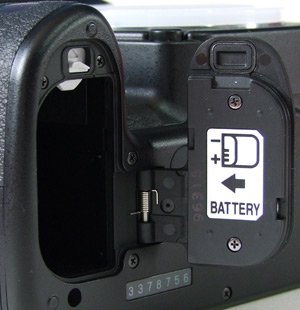 Since DSLR cameras represent the high-end of digital cameras, they are generally suitable for most types of photography. The versatility of interchangeable lenses brings SLR cameras their greatest potential. The Pentax K-7 is no exception, it is suitable for every type of photographic subject.
Since DSLR cameras represent the high-end of digital cameras, they are generally suitable for most types of photography. The versatility of interchangeable lenses brings SLR cameras their greatest potential. The Pentax K-7 is no exception, it is suitable for every type of photographic subject.
Feature-wise, the K-7 has just about everything. Other models distinguish themselves mostly by the choice of lenses available to them and ultimate performance. The traditional weak-point of Pentax cameras offering slower continuous shooting speed no longer applies with only a handful of models shooting faster. The ISO limit is on par with nearly all non-full-frame cameras. The ultimate in low-light usability for still subjects is between the Nikon D3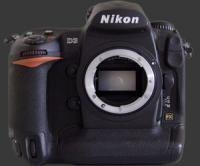
Nikon D3 and the Pentax K-7 both of which can shoot with a F/1.4 lens in extreme low-light (the K-7 using its built-in image stabilization and the D3 using its 3-stop ISO advantage due to its moderate-resolution full-frame sensor). Since stabilization never compensates for subject movement, the D3 has a clear advantage for moving subjects in low-light. The cost of this advantage is that the D3 is a much bulkier and expensive digital camera.
For specific photographic subjects, lens versatility is quite important. While the Pentax K-7 supports an incredibly large collection of lenses, most of these lenses are no longer in production. In terms of modern lenses, Pentax offers a rather small lineup, certainly smaller than the lineups of Canon and Nikon.
The Pentax K-7 has a weather-sealed body that makes it more suitable for rough environments and extra resistant to cold temperatures. Compared to its predecessor, the K-7 is compact, making it also more suitable for discreet shooting, assuming use of a discreet lens as well. This DSLR is currently the smallest DSLR to have a viewfinder with 100% coverage and the second smallest, behind the Pentax K200D, to have a weather-sealed body. It is worth noting that the K200D uses AA batteries which makes it more versatile for shooting in remote areas.
Pentax K-7 Capability - What can it do?
As noted in the introduction, the Pentax K-7 has everything expected from a modern DSLR plus an impressive list of extra features. Headline features include built-in image stabilization, automatic horizon correction, dust-reduction, a cold-resistant weather-proof body, 5.2 FPS continuous drive, movie-mode and live-view. Built-in stabilization is not only a cost-saving feature, it works with all lenses, even those without any stabilized counterparts such as prime, bright, tilt-shift and fish-eye lenses.
The Pentax K-7's power-switch has 3 positions: off, on and preview. The preview position is used for depth-of-field preview and digital preview. In all shooting modes, the behavior of the preview button is controlled by a setup option. Depth-of-field preview simply stops down the lens aperture to the one metered or set manually, this is the usual behavior. Digital preview takes a picture and shows it on the LCD before optionally storing it. Digital preview is cleverly used when setting white-balance and image parameters. This is an innovative way to ensure that the proper white-balance is selected. While scrolling through white-balance options and fine-tuning white-balance, the preview image is updated accordingly. Finding the right preset white-balance and tweaking it further is more time-consuming on DSLR cameras without this feature unless using a color-accurate live-view mode.
 The shutter-release on this DSLR is a standard 2-stage release with a soft halfway point. By default, pressing the shutter-release halfway locks focus but not exposure. It can be locked using a dedicated AEL-button or by the halfway press when a custom option is set. Focus can also be locked by a separate AF-button which can be configured to disable auto-focus instead. When exposure is locked, whether using the AEL-button or half-pressing the shutter-release, an asterisk is displayed in the viewfinder. This is an important indication of which behavior is in effect.
The shutter-release on this DSLR is a standard 2-stage release with a soft halfway point. By default, pressing the shutter-release halfway locks focus but not exposure. It can be locked using a dedicated AEL-button or by the halfway press when a custom option is set. Focus can also be locked by a separate AF-button which can be configured to disable auto-focus instead. When exposure is locked, whether using the AEL-button or half-pressing the shutter-release, an asterisk is displayed in the viewfinder. This is an important indication of which behavior is in effect.
The live-view mode of the K-7 has advanced compared to the K20D. A dedicated button enters and exits live-view. In live-view, the LCD shows 100% coverage, accurate focus and colors. Unfortunately exposure is not previewed at all meaning that it falls short of being WYSIWYG, as it is on the Canon EOS Rebel XSi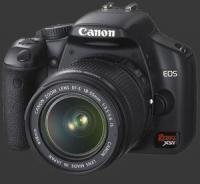
Canon EOS Rebel XSi for example. There is a nice digital level and histogram to help obtain straight and well-exposed images. Most controls are usable in live-view, although, strangely, changing exposure-modes and going into playback mode exits live-view.
The greatest thing about the K-7 is that it helps take better pictures. It does this by having a bright 100% coverage viewfinder and automatic horizon correction. This means that the photographer avoids having to crop and rotate images unexpectedly. Small rotation are detrimental to image quality and therefore avoiding them helps produce higher quality images. Cropping is not damaging by itself but knowing what is going to be in the frame is a relief to the photographer and allows to maximize the resolution of resulting images.
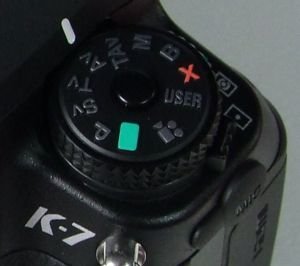 The mode dial of the Pentax K-7 has 11 positions. Five of these modes are ubiquitous on modern DSLR cameras: automatic (called Green-mode), program (P), shutter-priority (Tv), aperture-priority (Av) and full manual (M) mode. Notably absent from the mode-dial are scene modes which frequently control the camera in mysterious ways.
The mode dial of the Pentax K-7 has 11 positions. Five of these modes are ubiquitous on modern DSLR cameras: automatic (called Green-mode), program (P), shutter-priority (Tv), aperture-priority (Av) and full manual (M) mode. Notably absent from the mode-dial are scene modes which frequently control the camera in mysterious ways.
The remaining 6 modes are: sensitivity-priority (Sv), shutter-aperture-priority (TAv), bulb (B), flash-sync (X), user (USER) and movie. Sensitivity-priority is unique to the recent Pentax DSLRs, it lets the user directly select the ISO sensitivity. Shutter-aperture-priority complements sensitivity-priority by letting the user select both shutter-speed and aperture, letting the camera select the ISO sensitivity. Bulb mode keeps the shutter open as long as the shutter-release is pressed, other DSLRs make it part of manual (M) mode. Flash-sync mode keeps the shutter-speed at 1/180 which is the flash-sync speed. User mode is basically any mode which the user can save along with most camera settings. Movie-mode allows the recording of short video clips. Below the mode-dial is the metering selection switch. The standard 3 metering modes are available: 77-segment metering, center-weighed metering and spot-metering.
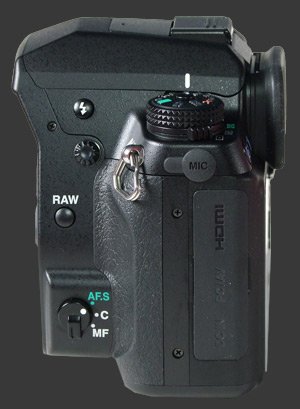 Movie-mode on the K-7 enters live-view automatically and provides the option to shoot in the camera's native aspect ratio of 3:2 at a higher-than-HD resolution of 1536x1024 or in standard wide screen 16:9 at 1280x720 at 30 FPS. Sound recording and stabilization can be turned on or off. The camera has an internal microphone to record mono sound and an external mini jack connector to accommodate a stereo microphone. Playback can be made to the rear LCD, an HDMI device at 1080i resolution or analog RCA output, either NTSC or PAL.
Movie-mode on the K-7 enters live-view automatically and provides the option to shoot in the camera's native aspect ratio of 3:2 at a higher-than-HD resolution of 1536x1024 or in standard wide screen 16:9 at 1280x720 at 30 FPS. Sound recording and stabilization can be turned on or off. The camera has an internal microphone to record mono sound and an external mini jack connector to accommodate a stereo microphone. Playback can be made to the rear LCD, an HDMI device at 1080i resolution or analog RCA output, either NTSC or PAL.
The Pentax K-7 has detailed control over white-balance including automatic white-balance, preset white-balanceDaylight, shade, cloudy, tungsten, flash, 4-types of fluorescent and enhanced-color (CTE), manual white-balance and color-temperature. All white-balance options can be fine-tuned in 15-steps from blue to amber and magenta to green. Fine-tuning can be reset by pressing the green button from the preview screen. The behavior of white-balance presets can be fixed to an exact color-temperature or adjusted by the camera. There is also an option to control if AWB corrects colors subtly or strongly under tungsten lighting.
The Pentax K-7 can bracket exposure for 3 or 5 frames, with increments between 1/3 and 2 EV. It also supports extended bracketing which produces 3 images from one image capture. Images can vary in white-balance, hue, saturation, high/low-key, contrast or sharpness. Flash compensation can be adjusted between -2 and +1 EV after pressing the Flash Mode (down) button.
This DSLR supports the standard drive modesSingle, continuous, self-timer, remote-control., HDR and multiple exposure. In continuous drive mode, the Pentax can shoot up to 40 JPEG images or up to 14 RAW (DNG) images. Continuous shooting speed is either 5.2 FPS or 3 FPS. The self-timer can trigger after 2 or 12 seconds. With the 2-second self-timer, the mirror is automatically locked-up. Unfortunately, the 12-second self-timer does not reset after each use. This would avoid the common mistake of forgetting to reset the long self-timer. This is so simple that Pentax could correct it by using a firmware update. Multiple-exposure can combine between 2 and 9 images with or without automatic exposure adjustment.
Bracketing is part of the drive-mode options, unlike with the K20D where it has a dedicated button. The result of this change is that bracketing cannot be set separately from drive-mode. Instead Pentax added a bracketing-with-self-timer and bracketing-with-remote-trigger sub-option to partly compensate for this loss of flexibility. Note that this means that bracketing and the 2s self-timer together can no longer be set, just like bracketing plus delayed-remote-trigger. This is the only actual loss of functionality compared to the K20D.
Every DSLR can produce RAW, JPEG or both types of images but the Pentax K-7 adds two extra features to its RAW support. The first feature is a choice of format, either Pentax's PEF or Adobe's DNG. The main difference is that PEF is more precisely suited to the Pentax K-7 while DNG is more portable. The second feature is in-camera RAW development. This lets users use RAW images without using conversion software. The difference between capturing JPEG images and processing RAW-images in-camera is that white-balance and image parameters can be adjusted after capture. To aid experimentation with RAW images, the K-7 also has a dedicated button to take the next shot in a different format which is configured in the custom-settings menu.
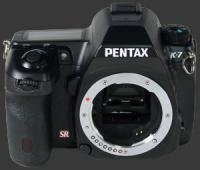 |
Please Support Neocamera
All information on Neocamera is provided free of charge yet running this website is a huge endeavor. Purchases made via affiliate links found throughout the site help keep it running and up-to-date. There is no additional cost to you, so please consider buying via these links to our affilates:
If you found any information on this site valuable and did not purchase via our affiliate links, please considering donating via PayPal:
Any amount will be greatly appreaciated. Thank you for your support!
Pentax K-7 Highlights

Sensor-Size: 24 x 16mm

Actual size when viewed at 100 DPI
| 15 Megapixels DSLR | ISO 100-6400 |
| Pentax K Mount 1.5X FLM | Shutter 1/8000-30s |
| 3-Axis Built-in Stabilization, 4-Stop Improvement | Full manual controls, including Manual Focus |
| 100% Coverage Large Viewfinder | Custom white-balance with 2 axis fine-tuning |
| Auto Horizon Correction 1 Axis Digital Level | Spot-Metering |
| Weatherproof down to -10C | Hot-Shoe & Sync-Port |
| Built-in Dust Reduction | Stereo audio input |
| 5.2 FPS Drive, 40 Images | Lithium-Ion Battery |
| 1536x1024 @ 30 FPS Video Recording | Secure Digital High Capacity |
| 3" LCD 920K Pixels |
Updates
2025.01.18

Fujifilm GFX 2025 Lens Roundup
Lens Review roundup of Fujifilm GFX Medium-Format lenses. Quality, performance and handling of the GF20-35mm F/4R WR, GF30mm F/3.5 Tilt-Shift and the GF55mm F/1.7.
2024.11.18

Best 2024 Photography Gifts for Every Budget
Great gifts for photographers and photo enthusiasts selected for every budget among the best products of 2024.
2024.08.07

Eye Protection Tips for Professional Photographers
The four main considerations for professional photographers regarding eyewear.
2024.07.14

Fujifilm X100VI Review
Flagship fixed-lens compact digital camera with a 40 MP sensor and Image-Stabilization, a first for the series. Retro design featuring dual control-dials, plus direct ISO, Shutter-Speed and EC dials. Its hybrid viewfinder can switch between EVF and OVF mode.
2024.05.09

Fujifilm GFX100 II Review
Flagship 102 Megapixels Medium-Format Mirrorless Digital Camera with 8-Stop 5-Axis IBIS, 8 FPS Drive, 8K Video and 400 MP Super-Resolution capture in a weatherproof and freezeproof body with dual control-dials and dual memory-card slots.
2024.04.03

Fujifilm X-T5 Review
Newest Fujifilm flagship boasting a 40 MP APS-C sensor, 5-axis IBIS with 7-stop efficiency, 15 FPS continuous drive, 6.2K Video capture, dual control-dials and dual SDXC UHS-II slots in a sturdy weatherproof and freezeproof body.
2023.11.20

Best Digital Cameras of 2023
Find out which are the Best Digital Cameras of 2023. All the new Mirrorless Digital Cameras from entry-level to high-end professional.
2023.07.10

Fujifilm X-H2 Review
40 Megapixels APS-C Hybrid Mirrorless Digital Camera with 7-stop IBIS. Fastest shutter ever and 8K video capture. Large builtin EVF with 0.8X magnification and 5.8 MP, plus an Eye-Start Sensor. Packed with features and large number of controls in a weatherproof and freezeproof body.
2023.05.07

Sony FE 20-70mm F/4G Review
Review of the unique Sony FE 20-70mm F/4G lens. The optical zoom of this lens spans ultra-wide-angle and medium focal-length coverage, making it one of the most versatile Full-Frame lenses on the market.
2023.01.15

Huion Inspiroy Dial 2 Review
Review of the Huion Inspiroy Dial 2 tablet, a medium sized drawing surface with dual dials and customizable buttons. Connects via USB-C or Bluetooth 5.0 with Windows, Linux and Android support.
2022.12.08

How to Pack for a Photo Trip
Find out how to pack for a travel photography trip, carry your gear safely while meeting airline regulations.
2022.11.13

Best Digital Cameras of 2022
The best digital cameras of 2022. A short list of the most outstanding models in their respective categories. Choose one for yourself or as a gift.











